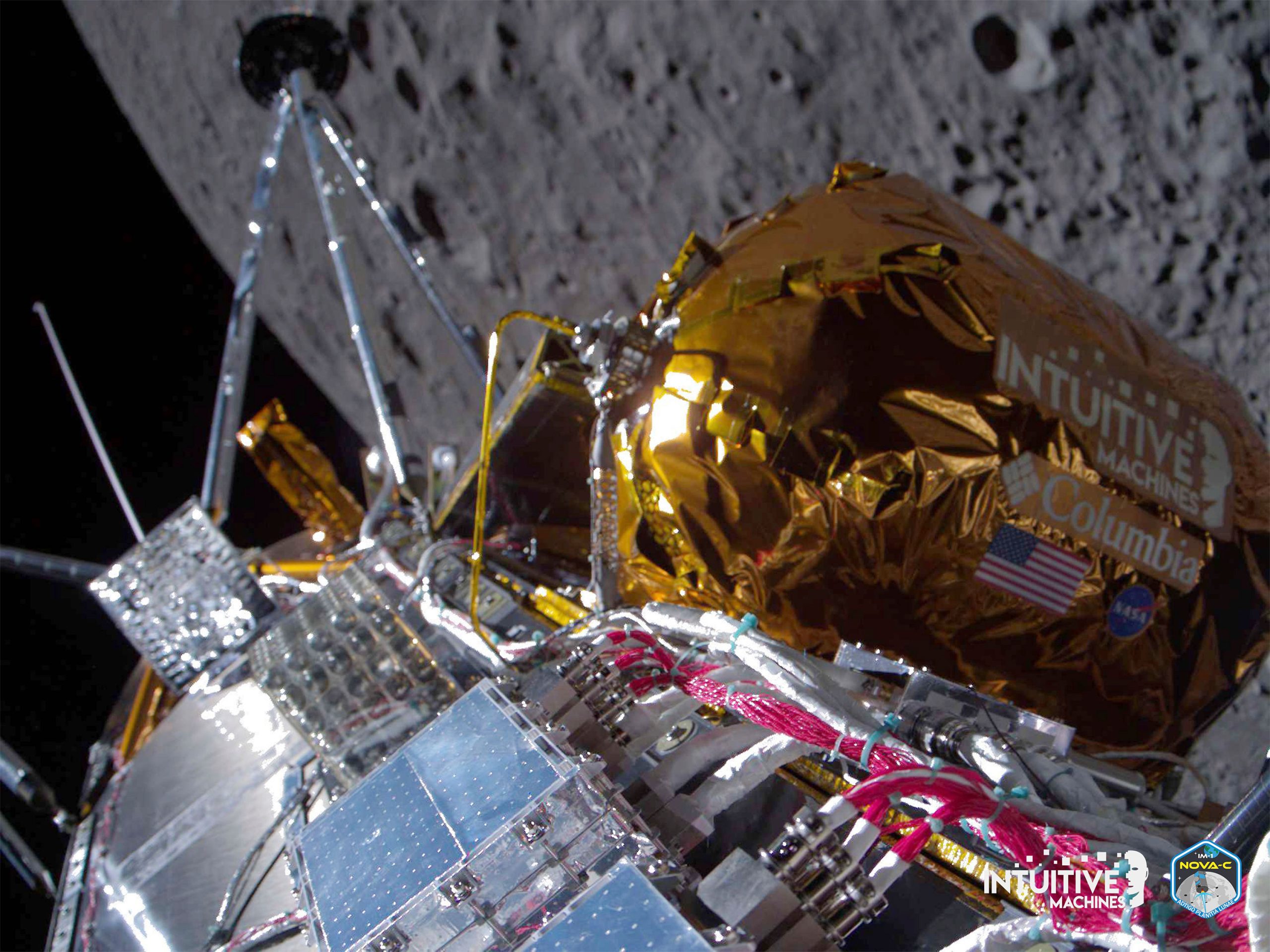Watch Moon Landing Today: Intuitive Machines’ Historic Lunar Triumph
In a groundbreaking achievement, Intuitive Machines’ Odysseus lunar lander successfully touched down on the moon, marking the first U.S. spacecraft landing since the Apollo 17 mission in 1972 and the maiden voyage of a private company on the lunar surface. The historic event unfolded on February 22, 2024, at 6:23 p.m. EST, sparking celebrations and applause at Intuitive Machines’ control center in Houston.

NASA, the primary customer for the Odysseus mission, expressed elation on social media, stating, “Your order was delivered… to the Moon!” The mission is part of NASA’s Commercial Lunar Payload Services initiative, aiming to establish a constant flow of landers on the moon for government and commercial payloads.
The journey of Odysseus began on February 15 when it was launched from NASA’s Kennedy Space Center in Florida aboard a SpaceX Falcon 9 rocket. The 14-foot-tall lunar lander carried a payload of twelve instruments, including six from NASA, Columbia Sportswear’s metallic jacket fabric experiment, and small moon sculptures by artist Jeff Koons.
The odyssey to the moon was not without challenges. As Odysseus descended, it faced uncertainties due to malfunctioning sensors. Despite the odds, the team at Intuitive Machines made critical real-time decisions, reprogramming the lander to rely on an experimental NASA payload, the Navigation Doppler Lidar, ensuring a safe descent.
Intuitive Machines CEO Steve Altemus, addressing the nail-biting moments, announced, “I know this was a nail-biter, but we are on the surface, and we are transmitting. Welcome to the moon.”
The successful lunar landing positions the United States in a new space race, with China as a notable competitor. The Odysseus spacecraft aims to land near the moon’s South Pole, an area of strategic interest for both nations in their pursuit of developing lunar bases.
NASA Administrator Bill Nelson congratulated Intuitive Machines, SpaceX for the Falcon 9 launch, and NASA’s commercial moon program, emphasizing the significance of returning to the moon after more than five decades. He stated, “Today, for the first time in more than a half century, the U.S. has returned to the moon.”
While the spacecraft has successfully landed, the condition of Odysseus remains under scrutiny. Engineers and mission controllers are analyzing telemetry data to assess the health of the lander and its payloads. The initial confirmation of a “faint signal” indicates that the spacecraft is transmitting from the lunar surface.
Odysseus is designed for a surface mission expected to last about half a lunar daytime, approximately seven Earth days. The spacecraft’s activities during this period include scientific experiments and data collection. The mission is a crucial step towards NASA’s Artemis program, aiming to establish a sustainable human presence on the moon.
As the world witnesses this historic achievement, the successful moon landing by a private U.S. company opens new frontiers for commercial space exploration and collaboration with NASA in future lunar endeavors. The watchful eyes of the global audience were fixed on the live coverage of this momentous event, showcasing the potential for continued human exploration and scientific discovery beyond Earth’s bounds.

